FOR IMMEDIATE RELEASE
CONTACT:
Cristina Samiley
213-335-5570
THE CALIFORNIA SMOKERS’ HELPLINE CELEBRATES 25 YEARS OF HELPING CLIENTS BREAK FREE FROM TOBACCO
Helpline services have helped more than 800,000 Californians
with method proven to double likelihood of successfully quitting
 SAN DIEGO (November 16, 2017) – Today, the California Smokers’ Helpline, the nation’s first statewide smoking quitline, is marking its silver anniversary by announcing plans to support more Californians quit smoking for good. Over the next few years, the Helpline will add more counselors, expand outreach to healthcare providers, introduce new protocols to better serve those with mental health conditions, and release a new version of its well-received app to help even more people quit smoking in a way that works for them.
SAN DIEGO (November 16, 2017) – Today, the California Smokers’ Helpline, the nation’s first statewide smoking quitline, is marking its silver anniversary by announcing plans to support more Californians quit smoking for good. Over the next few years, the Helpline will add more counselors, expand outreach to healthcare providers, introduce new protocols to better serve those with mental health conditions, and release a new version of its well-received app to help even more people quit smoking in a way that works for them.
These expansions were developed as part of a multifaceted approach to build the Helpline’s capacity and provide additional options to assist even more Californians quit tobacco. “We planned these expansions so the California Smoker’s Helpline can stay ahead of our clients’ needs, and to ensure we can help more people reach their quit goals in a manner that’s most effective for them,” said Shu-Hong Zhu, PhD, director, California Smokers’ Helpline. The Helpline’s research-based protocol has been proven to double a person’s likelihood of quitting for good.
The California Helpline was launched in 1992 as an experiment, but by 2002, every state in the nation had adopted similar telephone quitline services. The Helpline has provided free and confidential telephone counseling services to more than 800,000 Californians, an average of 32,000 clients a year. The typical caller is about 50 years old, but clients have included some as young as 14. Quitting assistance is offered in English, Spanish, Mandarin, Cantonese, Vietnamese and Korean, as well as TDD, all from highly trained and caring counselors. Chat services are also available, as well as a text messaging program.
“The Helpline’s dedicated counselors are clients’ supportive partners in their quit process,” said Dr. Zhu. “While we use the same research-proven method with each client, conversations and interactions are always shaped to address each person’s specific needs, questions and goals. Our counselors are a critical part of our success.”
As part of its anniversary, the California Smokers’ Helpline is showing the positive impact of quitting tobacco through the release of a touching video that shares the story of one of its now tobacco-free clients, Antonio. He credits the support of the Helpline with successfully quitting and remaining smoke-free. “I have been smoke-free for five years. The calls from 1-800-NO-BUTTS were a big part of my recovery from smoking.” Antonio’s story can be seen at https://www.nobutts.org/25yearsofquitting.
California’s smoking rate is the second lowest in the nation. However, even with that achievement, tobacco use remains the number one cause of preventable death and disease in the state. Approximately 40,000 Californians die each year from tobacco-related illnesses. More information about the California Smokers’ Helpline is available at www.nobutts.org or 1-800-NO-BUTTS.
GENERAL FACTS ON THE CALIFORNIA SMOKERS’ HELPINE CLIENTS
Approximately 57% of Helpline clients are female, and 42% are male. More than half of clients are between the ages of 45 and 64, and more than a quarter are between 25 and 44.
DEMOGRAPHIC BREAKDOWN OF CALIFORNIA SMOKERS’ HELPINE CLIENTS
|
Community |
% of Helpline Clients |
% in California that Smoke |
|
American Indian |
1.0% |
24.2% |
|
Asian American/Pacific Islander |
5.5% |
8.6% |
|
Black/African American |
17% |
20.7% |
|
Hispanic Latino |
16.3% |
11.5% |
|
White/Caucasian |
49.8% |
13.0% |
|
LBGT |
6.8% |
18.1%* |
*Smoking prevalence is 13.1% for heterosexual California adults.
About the California Smokers’ Helpline
The California Smokers’ Helpline is a free, evidence-based, telephone counseling program for quitting smoking, proven in clinical trials to double a smoker’s chance of successfully quitting. Services are available in English, Spanish, Chinese, Korean and Vietnamese and include telephone counseling, self-help materials, chat, text messaging program, and mobile app. Specialized services are available for teens, pregnant smokers, and tobacco chewers. Free nicotine patches are available to smokers who are pregnant, have children ages 0 to 5, or who speak Asian languages. The California Smokers’ Helpline can be reached at 1-800-NO-BUTTS or at www.nobutts.org, and on Facebook at https://www.facebook.com/nobutts.org. All services can be reached at:
English: 1-800-NO-BUTTS (1-800-662-8887)
Chinese: 1-800-838-8917
Korean: 1-800-556-5564
Spanish: 1-800-45-NO-FUME (1-800-456-6386)
Vietnamese: 1-800-778-8440
Tobacco Chewers: 1-800-844-CHEW (1-800-844-2439)






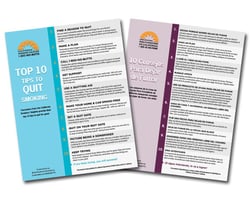 With the
With the 
 Oral diseases affect more people worldwide than any other chronic health condition of humankind. In addition to being a primary cause of major oral ailments, including oral cancer and gum disease, tobacco use disrupts nearly every facet of oral health: from taste perception, salivary flow, to the success of dental treatment.
Oral diseases affect more people worldwide than any other chronic health condition of humankind. In addition to being a primary cause of major oral ailments, including oral cancer and gum disease, tobacco use disrupts nearly every facet of oral health: from taste perception, salivary flow, to the success of dental treatment.
 Ms. Couch's research focuses on tobacco use in vulnerable populations and the role of dental professionals in tobacco prevention and cessation. Currently, she teaches in the Master of Science Degree Program in dental hygiene at UCSF and is the project coordinator of a longitudinal cohort study of tobacco use among adolescents in rural California. She holds an associate’s degree in dental hygiene from the Cabrillo College, a bachelor’s degree in biology from Cal Poly, San Luis Obispo and a master’s degree in dental hygiene from UCSF. She currently serves on the National Center for Dental Hygiene Research & Practice advisory board and is an active member of the California Dental Hygienists’ Association (CDHA), the American Dental Hygienists’ Association (ADHA), the American Dental Education Association (ADEA), and the International Association of Dental Research (IADR). In addition, she practices dental hygiene part-time where she is dedicated to addressing tobacco use among her patients.
Ms. Couch's research focuses on tobacco use in vulnerable populations and the role of dental professionals in tobacco prevention and cessation. Currently, she teaches in the Master of Science Degree Program in dental hygiene at UCSF and is the project coordinator of a longitudinal cohort study of tobacco use among adolescents in rural California. She holds an associate’s degree in dental hygiene from the Cabrillo College, a bachelor’s degree in biology from Cal Poly, San Luis Obispo and a master’s degree in dental hygiene from UCSF. She currently serves on the National Center for Dental Hygiene Research & Practice advisory board and is an active member of the California Dental Hygienists’ Association (CDHA), the American Dental Hygienists’ Association (ADHA), the American Dental Education Association (ADEA), and the International Association of Dental Research (IADR). In addition, she practices dental hygiene part-time where she is dedicated to addressing tobacco use among her patients.  Dr. Chaffee's research interests include tobacco-related behaviors and decision-making among adolescents, in particular how the marketing and regulation of smokeless tobacco influences tobacco use and health among rural youth. He is currently the lead investigator of cohort study of California rural high school male baseball players funded through the NIH/FDA Tobacco Regulatory Science program. Other research interests include how early life circumstances impact oral health and quality of life in childhood and the implementation of risk-based, prevention-oriented dental caries management in clinical settings. Dr. Chaffee is affiliated with the UCSF Center for Tobacco Control Research & Education, Global Health Sciences, the Helen Diller Family Comprehensive Cancer Center, and the Center to Address Disparities in Children's Oral Health. He serves as Director of the UCSF School of Dentistry Program in Global Oral Health.
Dr. Chaffee's research interests include tobacco-related behaviors and decision-making among adolescents, in particular how the marketing and regulation of smokeless tobacco influences tobacco use and health among rural youth. He is currently the lead investigator of cohort study of California rural high school male baseball players funded through the NIH/FDA Tobacco Regulatory Science program. Other research interests include how early life circumstances impact oral health and quality of life in childhood and the implementation of risk-based, prevention-oriented dental caries management in clinical settings. Dr. Chaffee is affiliated with the UCSF Center for Tobacco Control Research & Education, Global Health Sciences, the Helen Diller Family Comprehensive Cancer Center, and the Center to Address Disparities in Children's Oral Health. He serves as Director of the UCSF School of Dentistry Program in Global Oral Health. Tobacco and related products exert their addictive potential through nicotine. This webinar will review the mechanisms through which these products deliver nicotine and through which neural pathways nicotine exerts its effects on the brain.
Tobacco and related products exert their addictive potential through nicotine. This webinar will review the mechanisms through which these products deliver nicotine and through which neural pathways nicotine exerts its effects on the brain.
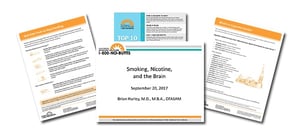 Our free Toolkit includes:
Our free Toolkit includes: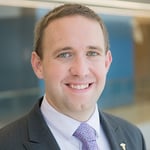 Brian Hurley, MD, MBA, DFASAM is an addiction psychiatrist and the Medical Director for Substance Use Related Care Integration at the Los Angeles County Health Agency. Brian is currently the Treasurer of the American Society of Addiction Medicine (ASAM) and gives presentations around the world related to addiction medicine. He is board certified in general psychiatry, addiction psychiatry, and addiction medicine.
Brian Hurley, MD, MBA, DFASAM is an addiction psychiatrist and the Medical Director for Substance Use Related Care Integration at the Los Angeles County Health Agency. Brian is currently the Treasurer of the American Society of Addiction Medicine (ASAM) and gives presentations around the world related to addiction medicine. He is board certified in general psychiatry, addiction psychiatry, and addiction medicine. Tobacco and related products exert their addictive potential through nicotine. This webinar will review the mechanisms through which these products deliver nicotine and the through which neural pathways nicotine exerts is effects on the brain.
Tobacco and related products exert their addictive potential through nicotine. This webinar will review the mechanisms through which these products deliver nicotine and the through which neural pathways nicotine exerts is effects on the brain.
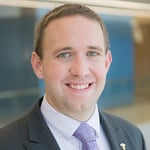 Brian Hurley, MD, MBA, DFASAM is an addition psychiatrist and the Medical Director for Substance Use Related Care Integration at the Los Angeles County Health Agency. Brian is currently the Treasurer of the American Society of Addiction Medicine (ASAM) and gives presentations around the world related to addiction medicine. He is board certified in general psychiatry, addiction psychiatry, and addiction medicine.
Brian Hurley, MD, MBA, DFASAM is an addition psychiatrist and the Medical Director for Substance Use Related Care Integration at the Los Angeles County Health Agency. Brian is currently the Treasurer of the American Society of Addiction Medicine (ASAM) and gives presentations around the world related to addiction medicine. He is board certified in general psychiatry, addiction psychiatry, and addiction medicine.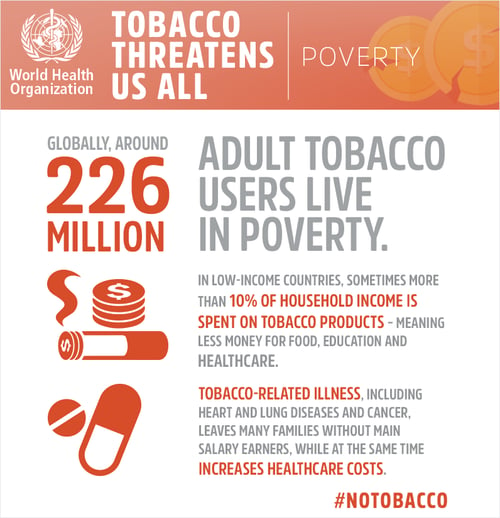
 Smoking cessation groups have been a mainstay of cessation interventions for years, but starting and maintaining groups can sometimes prove challenging. In this webinar Ken Fitzgerald from the Stanislaus County Office of Education and Zoila Reyna, MPH from the American Lung Association will offer insights, tools and resources for getting cessation groups up and running and for keeping them going:
Smoking cessation groups have been a mainstay of cessation interventions for years, but starting and maintaining groups can sometimes prove challenging. In this webinar Ken Fitzgerald from the Stanislaus County Office of Education and Zoila Reyna, MPH from the American Lung Association will offer insights, tools and resources for getting cessation groups up and running and for keeping them going:
 Ken has been coordinating public health and prevention programs in Stanislaus County since 2002. His experience includes leading policy initiatives for smoke-free outdoor areas in parks and colleges He also helped develop the Protecting Health And Slamming Tobacco (PHAST) Youth Coalition, which has grown into one of the largest tobacco prevention youth coalitions in California. Ken led in the development of the tobacco cessation curriculum known as Stop Tobacco And Nicotine Dependence (STAND). He provides training and technical assistance to schools and community organizations to support student wellness and strengthen school climate.
Ken has been coordinating public health and prevention programs in Stanislaus County since 2002. His experience includes leading policy initiatives for smoke-free outdoor areas in parks and colleges He also helped develop the Protecting Health And Slamming Tobacco (PHAST) Youth Coalition, which has grown into one of the largest tobacco prevention youth coalitions in California. Ken led in the development of the tobacco cessation curriculum known as Stop Tobacco And Nicotine Dependence (STAND). He provides training and technical assistance to schools and community organizations to support student wellness and strengthen school climate.  Zoila trains and supports health professionals throughout California in tobacco cessation programs in both clinical and public settings. She received her Master’s Degree in Public Health from UC Davis. She has 10 years of experience in program management, community engagement, and public health programs for underserved populations, in both rural and urban areas.
Zoila trains and supports health professionals throughout California in tobacco cessation programs in both clinical and public settings. She received her Master’s Degree in Public Health from UC Davis. She has 10 years of experience in program management, community engagement, and public health programs for underserved populations, in both rural and urban areas.